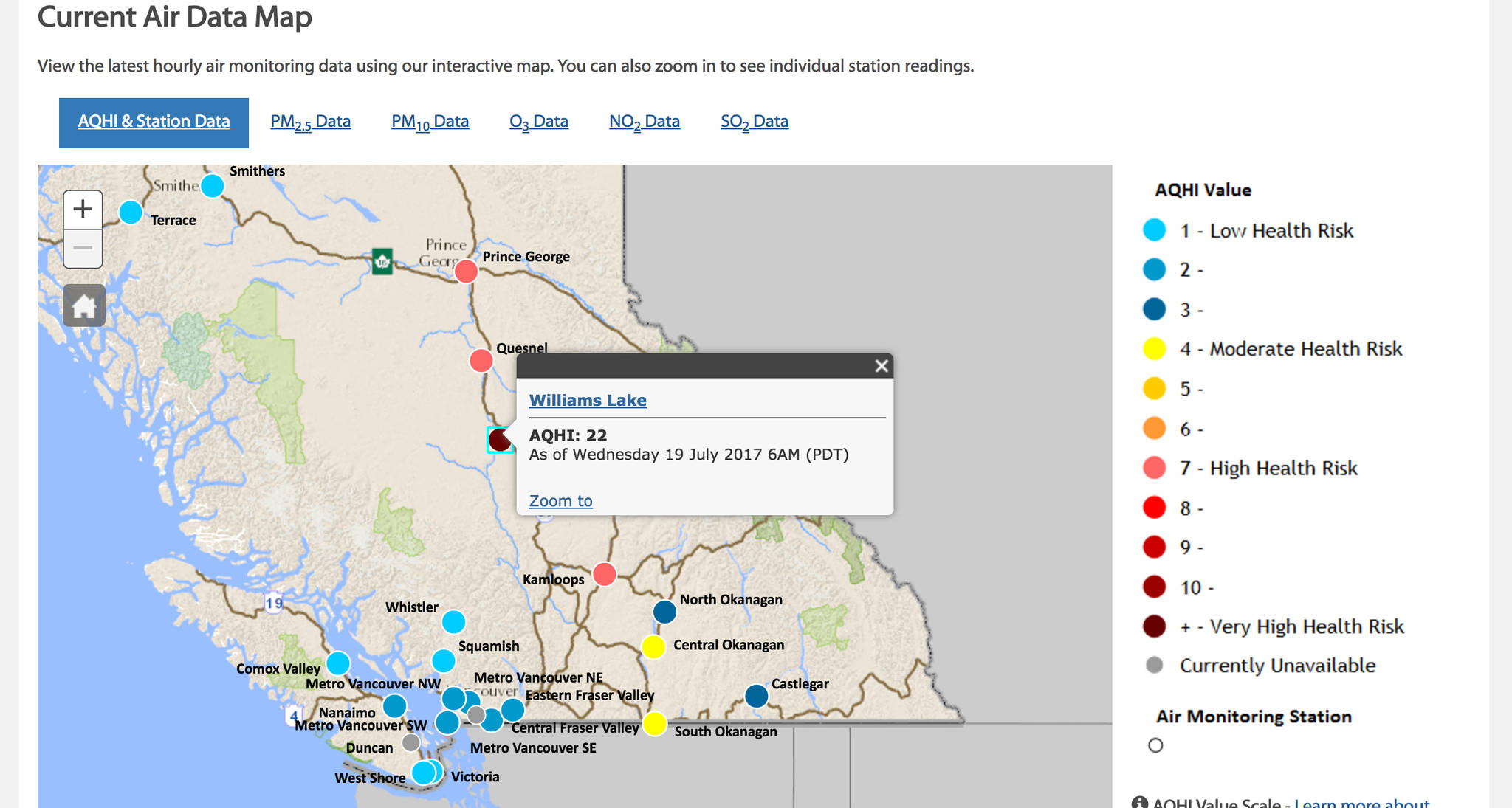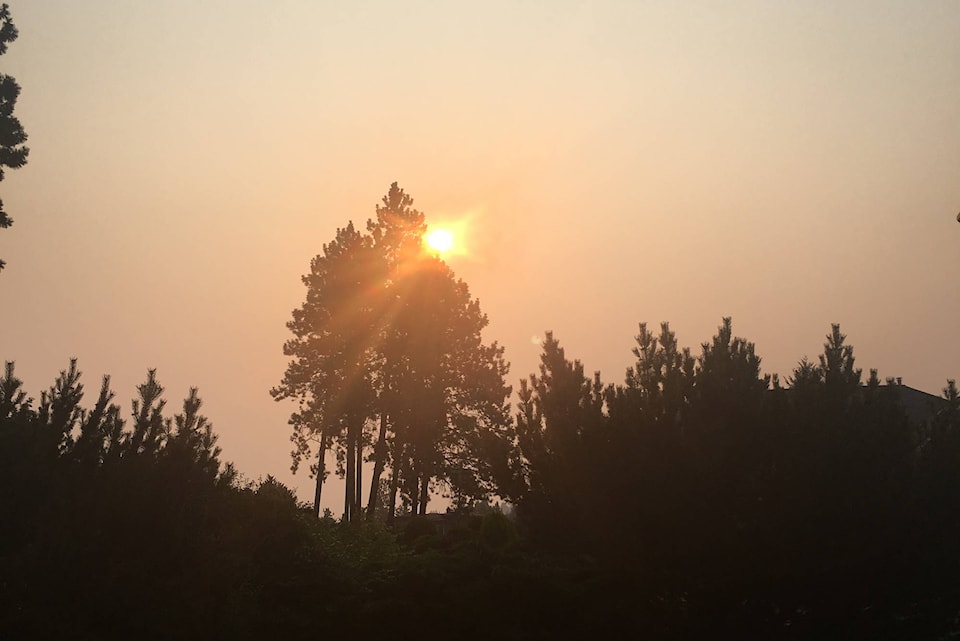Air quality has improved slightly as of Wednesday morning but smoke continues to hover over the Southern Interior causing a range air quality measures and reduced visibility.
A Smoky Skies Bulletin issued by the Ministry of Environment, in collaboration with the Interior Health Authority, remains in effect.
Residents in the following regions should take precautions; Kinbasket, North Columbia, West Columbia, East Columbia, Yoho Park - Kootenay Park, Elk Valley, East Kootenay, Arrow Lake - Slocan Lake, Kootenay Lake, West Kootenay, Boundary, Okanagan, Similkameen, Nicola, South Thompson, North Thompson, 100 Mile, Cariboo (North and South), and Chilcotin.
“Smoke concentrations will vary widely as winds, fire behaviour and temperatures change,” writes Environment Canada.
“Avoid strenuous outdoor activities. If you are experiencing any of the following symptoms, contact your health care provider: difficulty in breathing, chest pain or discomfort, and sudden onset of cough or irritation of airways. Exposure is particularly a concern for infants, the elderly and those who have underlying medical conditions such as diabetes, and lung or heart disease.”
Much like other days this week, air quality varied significantly. An improvement from a seven to a four (moderate health risk) was measured in the Central Okanagan, while Kamloops remains at a seven (high health risk) and Williams Lake has worsened to a 21 (very high health risk).
The Smoky Skies Bulletin will remain in effect until further notice.
“Individuals may experience symptoms such as increased coughing, throat irritation, headaches or shortness of breath. Children, seniors, and those with cardiovascular or lung disease, such as asthma, are especially at risk.”
Those affected are reminded to stay inside if you have breathing difficulties. Find an indoor place that’s cool and ventilated. Using an air conditioner that cools and filters air may help. If you open the windows you may let in more polluted air. If your home isn’t air-conditioned, consider going to a public place (library, shopping mall, recreation centre) that is air-conditioned.
For more information on current air quality, see: www.bcairquality.ca.
Visit www.airhealth.ca for information on how to reduce your health risk and your personal contribution to pollution levels, as well as for current and forecast AQHI values.

